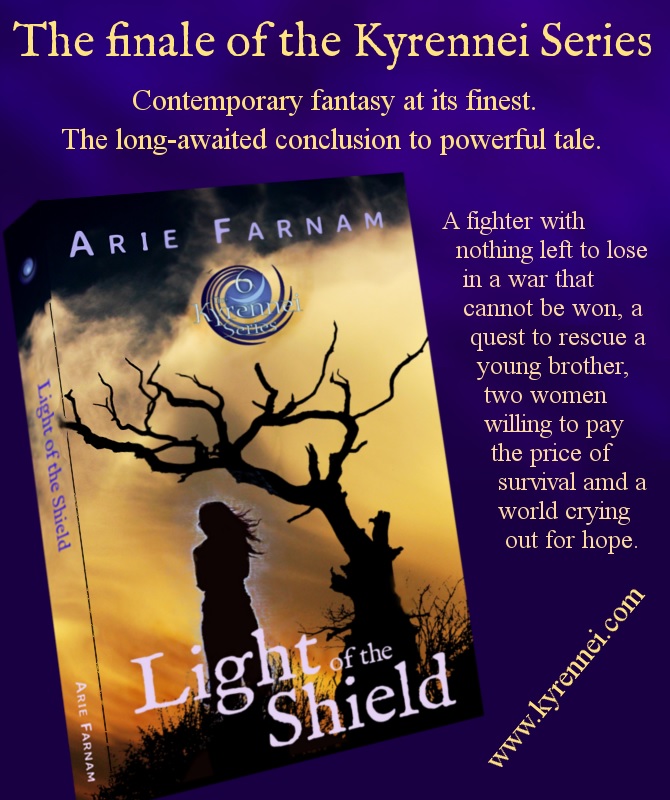Fear of need... or the problem with visible disabilities
/It has recently become almost fashionable to talk about the issue of invisible disabilities.
Well, praise Gaia! Finally a fashion that is helpful!
Still I have recently received a bit of a shock to my view of the divide between invisible and visible disabilities.
A little background... As long-term readers of this blog will probably recall, I started using a white cane regularly about ten years ago. I spent a lot of years before that "passing" for fully sighted, even though I'm clearly legally blind. Then in 2004, my husband and I moved to a small town outside Prague and I started teaching English and translating as a private business. I had to forge relationships in town and the invisibility of my disability presented a problem.
Several people told me they were offended that I didn't greet them from across the road. Others mentioned that I didn't use eye contact and smiles to show who I knew in a group or that they initially assumed I was developmentally disabled (using other terminology, as you can imagine) due to the strange look of my eyes.
A picture of my actual famous scooter. Image by Arie Farnam
I started using a white cane because I thought it might help to clue people in to the real issue--that I simply can't see much. Soon I noticed quite a few benefits of the cane, even though it made me feel uncomfortable. People in stores were much more helpful when I asked a question and crossing streets stopped feeling so much like risking my life.
In 2009, we brought home our first child and things changed dramatically. While I had used the cane a lot before, I now used it constantly. With a baby, I just couldn't take any amount of risk at intersections and it was around this time that a legally blind friend of mine was run over and nearly killed.
Still, somehow social relationships didn't improve over the long-term. The cane helped a bit with the social offense and confusion over the categorization of my disability, but not as much as you might imagine.
Soon the neighbors and acquaintances who initially seemed more willing to give directions or say "hello" retreated into guarded silence. I continued to say "hello" to everyone I met on the street. It's local custom in this country, but as the years passed the answers I got became gruffer and less friendly. Our circle of family friends narrowed to... mostly people with some sort of disability. I started to wonder if the cane was such a good gamble.
Fast-forward to 2016. My eldest child is nearly eight and the youngest is six. They are learning to cross roads safely. But more importantly, my bone and joint problems are acting up. I have always had crooked and funky bones in my legs and feet but compared to my eyes, it never seemed like a big priority. This year, however, with the kids attending two different schools and my husband in a higher pressure job than before, I have to do a lot of fetching and dropping off.
With soccer practice and my own teaching jobs in the mix, I can easily end up walking four or five miles on pavement every day. And neither my knees nor my feet can take it. I've always dealt with a fair amount of pain in my feet, but I never realized it wasn't "normal" for walking distances to be that uncomfortable. Now it is beyond "a fair amount" and worse than that it escalates day after day. My feet take more than a few days to heal from one five-mile day and these days five-mile days are every day.
The upshot of all this is that I ditched my cane this fall and I've been riding an electric scooter.
What? You go from blind to motorized without any actual change in your vision????
Essentially, yes. I was never carrying the cane for its ability to find walls... or even the thicker variety of lamp posts. I was carrying it for social cues and traffic safety. And I drive the scooter very slowly and only in areas that I know so well I could walk without a cane and with my eyes closed.
That said, I was pretty nervous when I first got the scooter. Neither my husband nor I could figure out how we were going to handle all the transportation of the kids this year with his job, so we decided that it was a necessity. But still I was sweating pretty heavily the first time I encountered people I know in town, riding on the scooter a day after having been downtown with my white cane.
Do you want to guess what happened? A wild flying guess?
Absolutely nothing.
My acquaintances greeted me cheerfully. I did my errand and returned home.
The next day I went out again, still nervous but excited at my new ease of mobility. The electric scooter is a far cry from a wheelchair. It does not look like something only a disabled person would ride and it has a very small physical footprint. You can fit on narrow medieval sidewalks with it and in many of the same spaces where walkers go. I can't use a bike well alone in the same way simply because bikes are too big for our tiny sidewalks and riding in traffic isn't an option. Also bicycles require a certain minimum speed to be stable. This scooter can really crawl and still maintain balance.
Over the first few days, I started to wonder about the new cheery mood that seemed to have swept through our little, often grumpy town. People who usually greeted me before, now do so with gusto and many people who had not greeted me previously started returning my greetings. The elderly ladies I often encounter on the way to town who used to glare at me and mutter before, now greet me with a chorus of chiming voices. I had to wonder if someone in town was making hard cider from the fall apples (and if so, where I could get some).
Keep in mind that I can't see people's expressions from any reasonable distance, so I could not tell if the cheerfulness (or the previous grumpiness) had anything to do with me. But as the weeks have passed, I have been astounded by reactions to my scooter.
Despite my initial anxiety, not one person has accused me of "faking" my vision impairment. Not one person has complained to the local police about my scooter taking up space on the sidewalks. And three people have stopped me to ask where they can buy such a scooter--one woman running desperately for two blocks to hail me because she has also been developing joint problems and she said she felt her heart leap when she saw me glide serenely by--uphill no less.
Several people have randomly commented on how nice the scooter looks and how helpful it is to me. When I apologize for taking up a particularly narrow sidewalk and scrunch to the side to let walkers pass I am often met with protestations that my scooter is "wonderful."
This has all been very pleasant and continues to be. But finally my husband got to the bottom of the change when he overheard someone saying how uncomfortable it made them to see me with a white cane. They felt helpless, not knowing how to help and yet they had a nagging feeling that they should somehow help "the blind lady." Now they see the scooter as having saved the day. No one seems to get that the scooter is not a guide machine of any kind.
They don't care. They suddenly don't see a person with a disability anymore and they feel better for it.
And that is a sobering thought for me.
I have lived much of my life straddling the line between a visible and an invisible disability. But there are many people who can never pass for non-disabled. I feel a bit like John Howard Griffin, the white journalist who went undercover as a black person in the Deep South of the United States in the 1950s. I get to experiment with seeing life from an isolated perspective and I get to return again to the "living."
But what is it that causes people to react so intensely (and so negatively) to visible disabilities?
There is a fear that is innate to our human DNA--a fear of helplessness. We fear being the outcast or being the person in need. And to see a person we believe is outcast and in need brings that fear up, just under the surface.
Then too there is also the feeling that one probably should help someone who is in what the temporarily able-bodied often consider "a terrible condition," even if the assumption that a visible disability must be terrible is erroneous. Obviously people with visible disabilities often don't need anyone's help just at the moment that you happen to see them on the street. They are just as likely to be routinely going about their business as anyone else.
Most of the time I fit that description.
I am glad to have discovered another technology that dispels some of the fear of physical differences. Still the core issue remains. A person's appearance is a very bad indicator of whether or not they need help. In this case it is better to listen than to look. People often ask for help and aren't heard. and others who never asked have help forced upon them (or are avoided out of fear) because of their appearance.
Words for our times: Pass through fear and listen.












